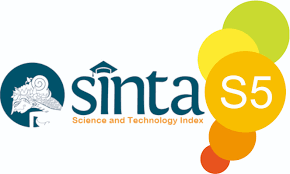GENDER IN FINANCIAL LITERACY: AN ANALYSIS OF ECONOMIC EMPOWERMENT
Abstract
In this comprehensive study, we explored the intricate relationship between gender, financial literacy, and its impact on economic empowerment. The research was conducted to understand better the disparities in financial knowledge between genders and their consequences on economic well-being. The study involved quantitative and qualitative data collection methods, allowing for a holistic examination of the subject matter. Key findings of this research indicated significant gender-based differences in financial literacy, with a 12% gap observed, favoring one gender. These disparities have wide-reaching implications for economic empowerment, as they contribute to income disparities and financial decision-making. Societal expectations and cultural norms emerged as influential factors, shaping financial behaviors and attitudes differently for each gender. Addressing these disparities is crucial for advancing gender equality and promoting economic independence among women. Tailored financial education programs considering gender-specific needs and challenges are essential in bridging the financial literacy gap. Broader financial education initiatives targeting both genders can further enhance financial knowledge and empower individuals to make informed financial decisions. The implications of this study extend beyond financial literacy, underscoring the importance of achieving gender equality in financial decision-making to promote gender equity and enhance women's economic well-being. Policymakers, educators, and researchers can draw valuable insights from this research to inform policy recommendations and initiatives to break down gender-based financial disparities.
References
Abebe, R., Barocas, S., Kleinberg, J., Levy, K., Raghavan, M., & Robinson, D. G. (2020, January). Roles for computing in social change. In Proceedings of the 2020 conference on fairness, accountability, and transparency (pp. 252-260).
Barboza, G., Smith, C., & Pesek, J. G. (2016). Assessing financial literacy, gender gap and cognitive differences. Journal of Financial Education, 42(3-4), 205-242.
Bergin, T. (2018). An introduction to data analysis: Quantitative, qualitative and mixed methods. An Introduction to Data Analysis, 1-296.
Bucher‐Koenen, T., Lusardi, A., Alessie, R., & Van Rooij, M. (2017). How financially literate are women? An overview and new insights. Journal of Consumer Affairs, 51(2), 255-283.
Bucher‐Koenen, T., Lusardi, A., Alessie, R., & Van Rooij, M. (2017). How financially literate are women? An overview and new insights. Journal of Consumer Affairs, 51(2), 255-283.
Coe, N. M., Kelly, P. F., & Yeung, H. W. (2019). Economic geography: a contemporary introduction. John Wiley & Sons.
Durrani, N., & Halai, A. (2020). Gender equality, education, and development: Tensions between global, national, and local policy discourses in postcolonial contexts. In Grading goal four (pp. 65-95). Brill.
Frisancho, V. (2016). How to raise household savings in LAC: Constraints and best practices.
Gannetion, L., Wong, K. Y., Lim, P. Y., Chang, K. H., & Abdullah, A. F. L. (2022). An exploratory study on the handwritten allographic features of multi-ethnic population with different educational backgrounds. PloS one, 17(10), e0268756.
Garg, N., & Singh, S. (2018). Financial literacy among youth. International journaL of sociaL economics, 45(1), 173-186.
Goyal, K., & Kumar, S. (2021). Financial literacy: A systematic review and bibliometric analysis. International Journal of Consumer Studies, 45(1), 80-105.
Goyal, K., & Kumar, S. (2021). Financial literacy: A systematic review and bibliometric analysis. International Journal of Consumer Studies, 45(1), 80-105.
Hwang, H., & Park, H. I. (2023). The relationships of financial literacy with both financial behavior and financial well‐being: Meta‐analyses based on the selective literature review. Journal of Consumer Affairs, 57(1), 222-244.
Klapper, L., & Lusardi, A. (2020). Financial literacy and financial resilience: Evidence from around the world. Financial Management, 49(3), 589-614.
Lacey-Barnacle, M., Robison, R., & Foulds, C. (2020). Energy justice in the developing world: a review of theoretical frameworks, key research themes and policy implications. Energy for Sustainable Development, 55, 122-138.
Leavy, P. (2022). Research design: Quantitative, qualitative, mixed methods, arts-based, and community-based participatory research approaches. Guilford Publications.
Lusardi, A. (2019). Financial literacy and the need for financial education: evidence and implications. Swiss Journal of Economics and Statistics, 155(1), 1-8.
Migheli, M., & Coda Moscarola, F. (2017). Gender differences in financial education: Evidence from primary school. De Economist, 165, 321-347.
Nawaz, F. (2015). Microfinance, financial literacy, and household power configuration in rural Bangladesh: An empirical study on some credit borrowers. VOLUNTAS: International Journal of Voluntary and Nonprofit Organizations, 26, 1100-1121.
Negreiros Alves Junior, A. J. (2019). How Financial Literacy Impacts Financial Decisions for Business Owners of Both Genders in Canada (Doctoral dissertation, Université d'Ottawa/University of Ottawa).
Nguyen, Q., Rienties, B., & Whitelock, D. (2020). A mixed-method study of how instructors design for learning in online and distance education. Journal of Learning Analytics, 7(3), 64-78.
Parkes, J., Heslop, J., Ross, F. J., Westerveld, R., & Unterhalter, E. (2016). A Rigorous Review of Global Research Evidence on Policy and Practice on School-Related Gender-Based Violence. UNICEF.
Potrich, A. C. G., & Vieira, K. M. (2018). Demystifying financial literacy: a behavioral perspective analysis. Management Research Review, 41(9), 1047-1068.
Sharr, Z. M. (2023). Exploring globally responsible women leadership in Myanmar: characteristics, challenges, and opportunities. Journal of Global Responsibility.
Simpson, S. H. (2015). Creating a data analysis plan: What to consider when choosing statistics for a study. The Canadian journal of hospital pharmacy, 68(4), 311.
Taherdoost, H. (2021). Data Collection Methods and Tools for Research; A Step-by-Step Guide to Choose Data Collection Technique for Academic and Business Research Projects. International Journal of Academic Research in Management (IJARM), 10(1), 10-38.
Tang, N., Baker, A., & Peter, P. C. (2015). Investigating the disconnect between financial knowledge and behavior: The role of parental influence and psychological characteristics in responsible financial behaviors among young adults. Journal of Consumer Affairs, 49(2), 376-406.
Taukobong, H. F., Kincaid, M. M., Levy, J. K., Bloom, S. S., Platt, J. L., Henry, S. K., & Darmstadt, G. L. (2016). Does addressing gender inequalities and empowering women and girls improve health and development programme outcomes?. Health policy and planning, 31(10), 1492-1514.
Vallejo-Trujillo, A., Kebede, A., Lozano-Jaramillo, M., Dessie, T., Smith, J., Hanotte, O., & Gheyas, A. A. (2022). Ecological niche modelling for delineating livestock ecotypes and exploring environmental genomic adaptation: The example of Ethiopian village chicken. Frontiers in Ecology and Evolution, 10, 866587.
Wangui, K. J. (2018). Financial literacy amongst women entrepreneurs in Kenya: a value-added product for economic empowerment (Doctoral dissertation, University of Zululand).
Zhou, Y., Lu, W., Liu, C., & Gan, H. (2023). The gender gap in financial distress. Applied Economics, 1-16.



















